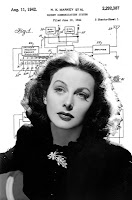July 4, American Independence Day holiday—on this date in 1776, the Declaration of Independence was approved by the Continental Congress, setting the 13 colonies on the road to freedom as a sovereign nation. The U.S. Constitution, the document that emerged from the 1787 Philadelphia Convention, is the oldest national constitution in the world.
This most American of holidays is normally marked by fireworks, parades, and backyard barbecues. Fireworks displays are common throughout the world and are the focal point of many cultural and religious celebrations. Fireworks were invented in ancient China to scare away evil spirits, as a natural extension of the Chinese invention of gunpowder.
With 4th of July fireworks comes the concern for safety. A reality for the holiday is that fireworks cause thousands of injuries, and even some deaths, in addition to enough fires to make July 4 the day with the most reported fires across the United States according to the National Fire Protection Association.
So…how much do you know about fireworks safety? Here's a 9 question quiz to test your knowledge. Correct answers are at the end.
1) How hot does a sparkler burn?
a: 212 degrees
b: 600 degrees
c: 950 degrees
d: 1200 degrees
2) What portion of 4th of July fires are caused by fireworks?
a: 10 percent
b: 35 percent
c: 50 percent
d: 90 percent
3) Which age group has the most injuries reported from fireworks?
a: under 20
b: 20 – 40
c: 40 – 60
d: 60+
4) You should skip buying fireworks in brown paper packaging as that could be a sign that they're made for professionals, not consumers.
a: true
b: false
5) If a pack of fireworks has not fully functioned, you should cautiously relight it.
a: true
b: false
6) What's the best way to dispose of used fireworks?
a: throw in trash
b: use hose or bucket of water to soak them then
throw away
c: bury them
7) What is the most common fireworks injury?
a: fractures and sprains
b: contusions and lacerations
c: ear injuries
d: burns
e: eye injuries
8) According to a U.S. Consumer Product Safety Commission investigation, which of these were common reasons for fireworks injuries?
a: holding fireworks in the hand
b: mischief
c: debris or smoke from a malfunction
d: errant flight path from a malfunction
e: early or late ignition from a malfunction
f: all of the above
9) Never light more than how many fireworks at a time?
a: 1
b: 2
c: 3
And now, for those of you who want to see how well you did on the quiz—
1) the answer is d…1200F degrees, hot enough to burn certain metals and ignite clothing.
2) the answer is c…50 percent, when shooting fireworks keep a bucket of water or sand available.
3) the answer is a…under 20, children 10–14 are more than twice as much at risk for fireworks injuries.
4) the answer is a…true.
5) the answer is b…false, any malfunctioning fireworks should be soaked in water then thrown away
6) the answer is b…use hose or bucket of water to soak them and then throw them away
7) the answer is d…burns
8) the answer is f…all of the above
9) the answer is a…light just 1 at a time.
A happy and safe holiday to everyone.











































